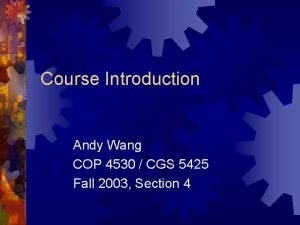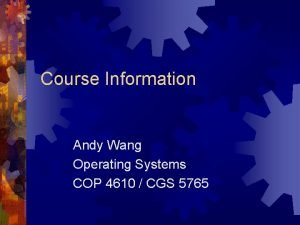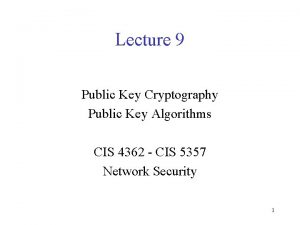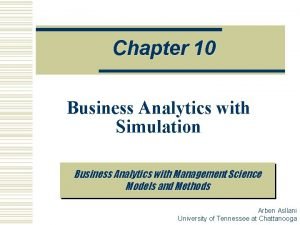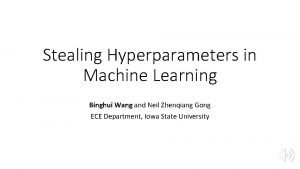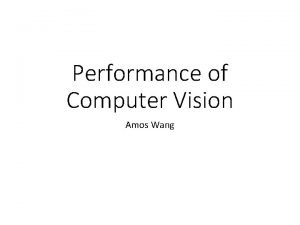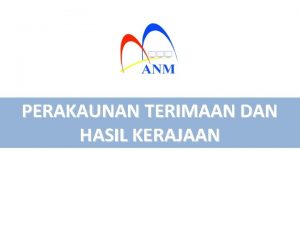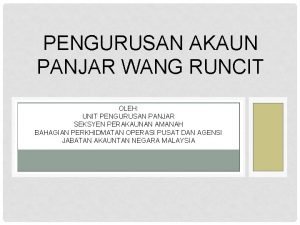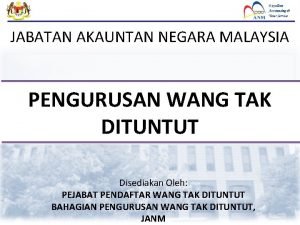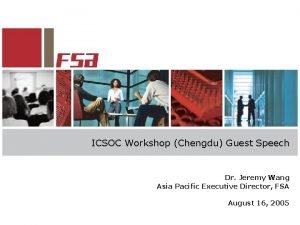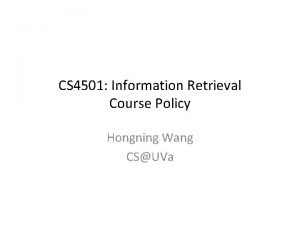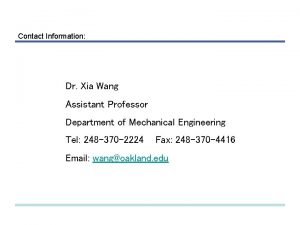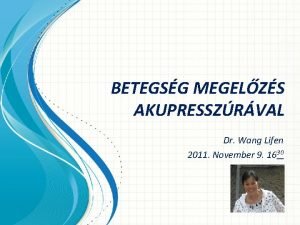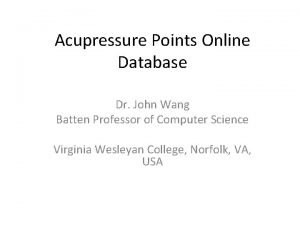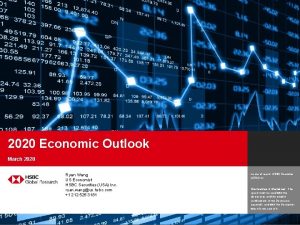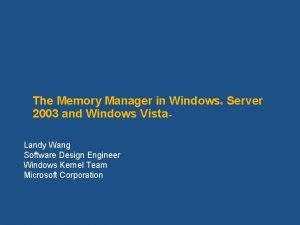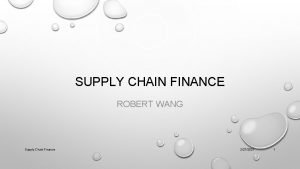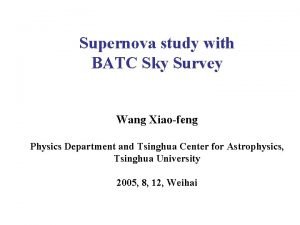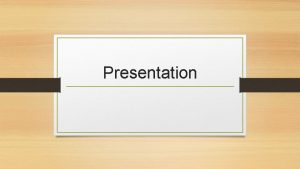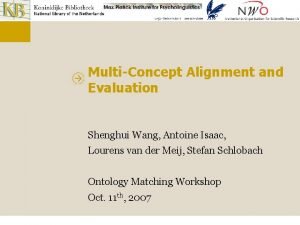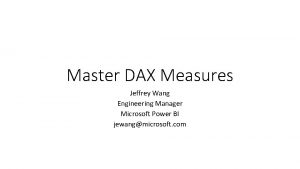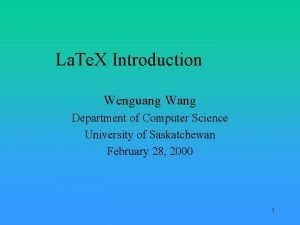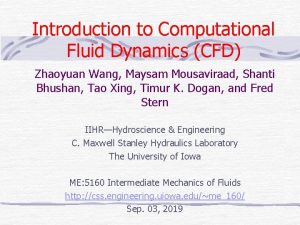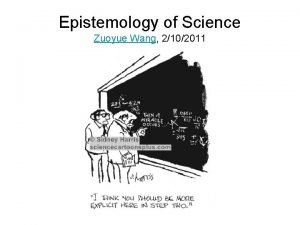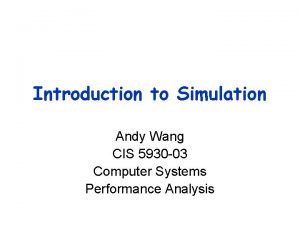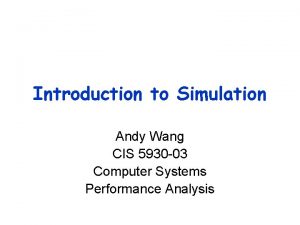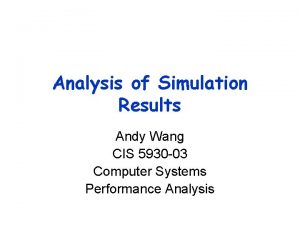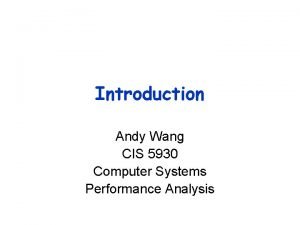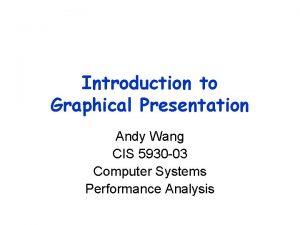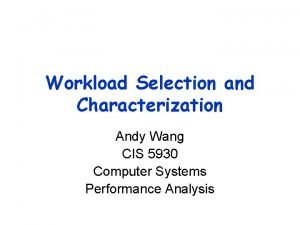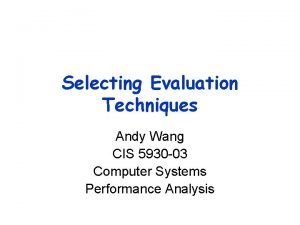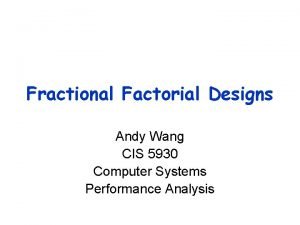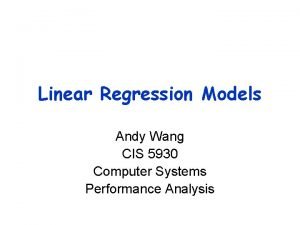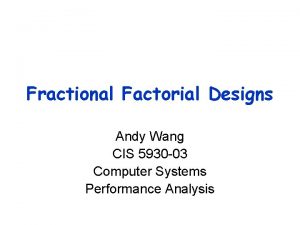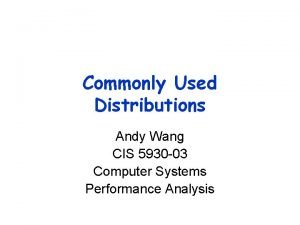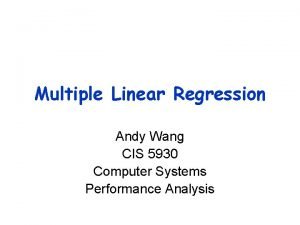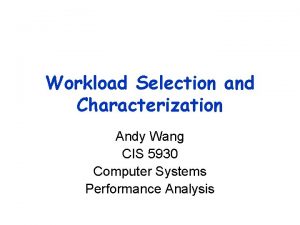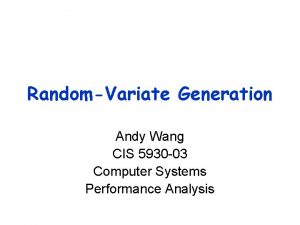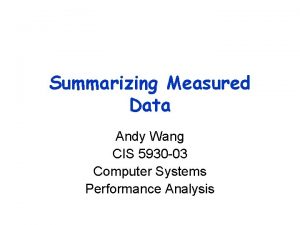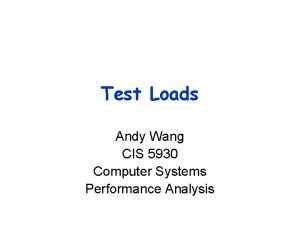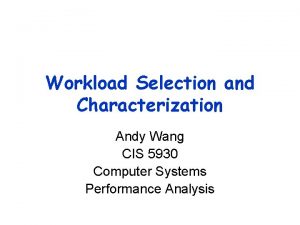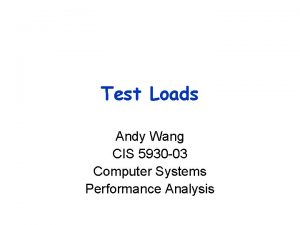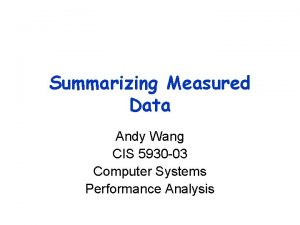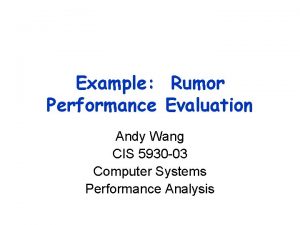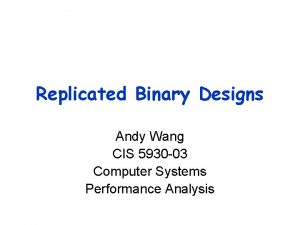Introduction to Simulation Andy Wang CIS 5930 03





































- Slides: 37

Introduction to Simulation Andy Wang CIS 5930 -03 Computer Systems Performance Analysis

Simulations • Useful when the system is not available • Good for exploring a large parameter space • However, simulations often fail • Need both statistical and programming skills • Can take a long time 2

Common Mistakes • Inappropriate level of detail – More details more development time more bugs more time to run – More details require more knowledge of parameters, which may not be available • E. g. , requested disk sector – Better to start with a less detailed model • Refine as needed 3

Common Mistakes • Improper language – Simulation languages • Less time for development and statistical analysis – General-purpose languages • More portable • Potentially more efficient 4

Common Mistakes • Invalid models – Need to be confirmed by analytical models, measurements, or intuition • Improperly handled initial conditions – Should discard initial conditions – Not representative of the system behavior • Too short simulations – Heavily dependent on initial conditions 5

Common Mistakes • Poor random number generators – Safer to use well-known ones – Even well-known ones have problems • Improper selection of seeds – Need to maintain independence among random number streams – Bad idea to initialize all streams with the same seed (e. g. , zeros) 6

Other Causes of Simulation Analysis Failure • Inadequate time estimate – Underestimate the time and effort – Simulation generally takes the longest time compared to modeling and measurement • Due to debugging and verification • No achievable goal – Needs to be quantifiable 7

Other Causes of Simulation Analysis Failure • Incomplete mix of essential skills – Project leadership – Modeling and statistics – Programming – Knowledge of modeled system • Inadequate level of user participation – Need periodic meetings with end users 8

Other Causes of Simulation Analysis Failure • Obsolete or nonexistent documentation • Inability to manage the development of a large, complex computer program – Needs to keep track of objectives, requirements, data structures, and program estimates • Mysterious results – May need more detailed models 9

Terminology • State variables: the variables whose values define the state of the system – E. g. , length of a job queue for a CPU scheduler • Event: a change in the system state 10

Static and Dynamic Models • Static model: time is not a variable – E. g. , E = mc 2 • Dynamic model: system state changes with time – CPU scheduling 11

Continuous and Discrete-time Model Continuous-time model • System state is defined at all times Discrete-time model • System state is defined only at instants in time Number of students attending this class Time spent executing a job Time Tuesdays and Thursdays 12

Continuous and Discretestate Model Continuous-state model • Use continuous state variables Time spent executing a job Discrete-state model • Use discrete state variables Number of jobs Time • Possible to have all four combinations of continuous/discrete time/state models 13

Deterministic and Probabilistic Model Deterministic model • Output of a model can be predicted with certainty Probabilistic model • Gives a different result for the same input parameters output input 14

Linear and Nonlinear Models Linear model • Output parameters are linearly correlated with input parameters Nonlinear model • Otherwise 15

Stable and Unstable Models Stable model • Settles down to a steady state Unstable model • Otherwise 16

Open and Closed Models Open model • Input is external to the model and is independent of the model Close model • No external input 17

Computer System Models • Generally – Continuous time – Discrete state – Probabilistic – Dynamic – Nonlinear 18

Selecting a Language for Simulation • • Simulation language General-purpose language Extension of general-purpose language Simulation package 19

Simulation Languages • Have built-in facilities – Time advancing – Event scheduling – Entity manipulation – Random-variate generation – Statistical data collection – Report generation • Examples: SIMULA, Maisie, Par. SEC 20

General-purpose Languages • C++, Java • No need to learn a new language • Simulation languages may not be available • More portable • Can be optimized 21

Extensions of General. Purpose Languages • Provide routines commonly required in simulation • Examples: CSim, NS-3 (OTcl + C++) 22

Simulation Packages • Provide a library of data structures, routines, algorithms • Significant time savings – Can be done in one day • However, not flexible for unforeseen scenarios 23

Types of Simulations • Emulation – Hybrid simulation • Monte Carlo simulation • Trace-driven simulation • Discrete-event simulation 24

Emulation and Hybrid Simulation • Emulation – A simulation using hardware/firmware • Hybrid simulation – A simulation that combines simulation and hardware – E. g. , a 5 -disk RAID • One simulated disk • Four real disks 25

Monte Carlo Simulation • A type of static simulation • Models probabilistic phenomenon • Can be used to evaluate nonprobabilistic expressions – E. g. , use the average of estimates to evaluate difficult integrals 26

Trace-Driven Simulation • Trace: a time-ordered record of events on a real system – Needs to be as independent of the underlying system as possible • Storage-level trace may be specific to the cache replacement mechanisms above, the working set, the memory size, etc. 27

Advantages of Trace. Driven Simulation • Credibility • Easy validation – Just compare measured vs. simulated numbers • Accurate workload – Preserves the correlation and interferences effects 28

Advantages of Trace. Driven Simulation • Less randomness – Deterministic input – Less variance – Fewer number of runs to get good confidence • Fairer comparison (deterministic input) – For different alternatives • Similarity to the actual implementation 29

Disadvantages of Trace. Driven Simulation • Complexity – More detailed simulation to take realistic trace inputs • Representativeness – Trace from one system may not be representative of the workload on another system – Can become obsolete quickly 30

Disadvantages of Trace. Driven Simulation • Finiteness – A trace of a few minutes may not capture enough activity • Single point of validation – Algorithms optimized for one trace may not work for other traces • Trade-off – Difficult to change workload characteristics 31

Discrete-Event Simulation • Uses discrete-state model – May use continuous or discrete time values 32

Common Components • Event scheduler – E. g. , schedule event X at time T • Simulation clock • A time-advancing mechanism – Unit time: Increments time by small increments – Event-driven: Increments time automatically to the time of the next earliest event 33

Common Components • System state variables • Event routines (handlers) • Input routines – E. g. , number of repetitions • Report generator • Initialization routines – Beginning of a simulation, iteration, repetition 34

Common Components • Trace routines (for debugging) – Should have an on/off feature – Snapshot/continue from a snapshot • Dynamic management • Main program 35

Event-Set Algorithms • How to track events – Ordered linked list (< 20 events) – Indexed linked list (20 – 120 events) • Calendar queue – Tree structure (> 120 events) • E. g. , heap 36

White Slide 37
 Andy wang fsu
Andy wang fsu Andy wang fsu
Andy wang fsu Cis 4362 introduction to cryptology
Cis 4362 introduction to cryptology Introduction to modeling and simulation
Introduction to modeling and simulation Pemodelan dan simulasi
Pemodelan dan simulasi Business analytics simulation
Business analytics simulation Regina wang md
Regina wang md Stealing hyperparameters in machine learning
Stealing hyperparameters in machine learning Yongge wang
Yongge wang Dr caroline wang
Dr caroline wang Amos wang
Amos wang Arahan perbendaharaan penurunan kuasa
Arahan perbendaharaan penurunan kuasa Panjar wang runcit maksud
Panjar wang runcit maksud Huazheng wang
Huazheng wang Akta wang tak dituntut 1965 (pindaan 2002)
Akta wang tak dituntut 1965 (pindaan 2002) Dr jeremy wang
Dr jeremy wang Hongning wang
Hongning wang Dr xia wang
Dr xia wang Dr kenneth wang
Dr kenneth wang Minmei wang
Minmei wang Meridián pontok jelentése
Meridián pontok jelentése Social media trend analysis
Social media trend analysis Dr john wang
Dr john wang Ryan wang hsbc
Ryan wang hsbc Guanhua wang
Guanhua wang Landy wang microsoft
Landy wang microsoft Jyhwen wang
Jyhwen wang Dr robert wang
Dr robert wang Wang
Wang Annie leibovitz album covers
Annie leibovitz album covers Tom wang masterclass
Tom wang masterclass Shenghui wang
Shenghui wang Jumlah denominasi wang kertas malaysia
Jumlah denominasi wang kertas malaysia Jeffrey wang dax
Jeffrey wang dax Wenguang wang
Wenguang wang Cfd software
Cfd software Zuoyue
Zuoyue Zhuang wang
Zhuang wang
